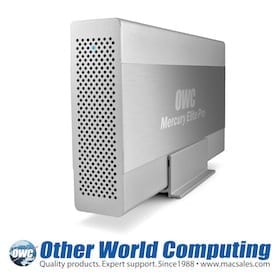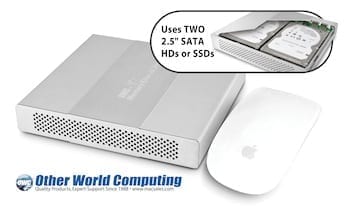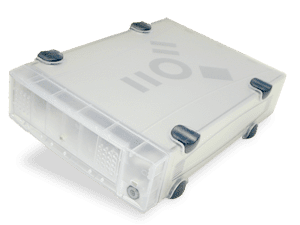 Breaking it down to its simplest forms, there are two main reasons to add a RAID setup to your computer system. Performance and Redundancy.
Breaking it down to its simplest forms, there are two main reasons to add a RAID setup to your computer system. Performance and Redundancy.
Let’s break these down individually:
Little Johnny was acting up in class and his teacher made him sit in the hallway while all the other kids went to recess. If he could finish writing “I will not put frogs in the teacher’s desk ever again” 100 times on paper before the rest of his classmates came back to class, little Johnny would be able to join them in the playground.
Redundancy.
An individual hard drive stores all the ones and zeros that make up our data. From our story about little Johnny, the sentence he has to write would be our data and his paper the hard drive. Now Johnny is a cunning child and it’s not the first time he’s missed recess writing sentences. This time, he came prepared with a sheet of carbon paper. (The link is for those of you too young to remember carbon paper.) Johnny put the sheet of the carbon paper between two of the pages in his notebook and began writing his sentences. After he finished his 50th sentence, Johnny now had the teacher’s required 100 hand-written sentences. 50 of them on the top sheet of paper and an exact copy of the other.
Two pieces of paper with exactly the same data – Johnny went to turn in his papers and join the others on the playground. The teacher, however, knew she had been duped when the same spelling errors showed up on the same lines in each page. As the two pages were exactly the same, she knew Johnny did not do each sentence individually as she intended and tore up one of the pages.
What has this to do with RAID? Johnny just gave us a perfect example of redundancy. Redundancy keeps your data safe in the case of drive failure. When the teacher tore up the copied page, Johnny was still left with his original 50 sentences. He hadn’t lost any of the actual effort he put into the sentences, he only lost the copy of them. Just like in a redundant RAID – when one drive fails, you still have a copy of all your data. This is also called RAID 1.
Performance.
Johnny’s antics got him in trouble the following day too. Again, the teacher made him sit in the classroom while everyone else left to go outside for recess. He had to write, “I will not disrupt the class by passing candy to my classmates” 100 times across the chalkboards in the room. Well, this time Johnny was prepared as well to thwart the system. The reason Johnny was passing candy to some of his classmates was in exchange for a favor.
 When recess time came, Johnny’s teacher took the rest of the class outside to play, but the children that accepted the candy snuck right back into the classroom and each wrote their share of the 100 sentences. Here’s how they did it. All the children lined up in front of the chalkboards and each took a section of the sentence. Johnny wrote “I will” 100 times in one column on the first chalkboard while Abby wrote “not disrupt” in her column next to Johnny. Ralphie wrote “the class”… you get the idea. Made for pretty quick work with each student having to only write a fraction of the whole 100 sentences on each chalkboard.
When recess time came, Johnny’s teacher took the rest of the class outside to play, but the children that accepted the candy snuck right back into the classroom and each wrote their share of the 100 sentences. Here’s how they did it. All the children lined up in front of the chalkboards and each took a section of the sentence. Johnny wrote “I will” 100 times in one column on the first chalkboard while Abby wrote “not disrupt” in her column next to Johnny. Ralphie wrote “the class”… you get the idea. Made for pretty quick work with each student having to only write a fraction of the whole 100 sentences on each chalkboard.
With plenty of playtime left, Johnny ran outside and told his teacher he was done already. All 100 sentences were written on the blackboards. Johnny’s teacher came in to inspect and on the way told Mary to follow along. After looking at all the sentences to see they were all there, the teacher asked Mary how she got chalk dust all over her pretty new school dress. Mary confessed, “I wrote ‘candy to my’ on the blackboards for Johnny”. The teacher promptly erased that section on each blackboard. Johnny was left without a single complete sentence.
This is a perfect example of a performance RAID. Part of the data is written to separate hard drives in the array just like each child took a section of the sentence at a time. While all drives are active and intact, the writing goes quickly as each drive only writes a part of the data while the other drives are simultaneously writing other parts. However, when one drive in that system fails, the data on all the drives is lost, just like Johnny was left without a single sentence to show for his effort. A performance RAID is also known as RAID 0.
RAID can be confusing. Other World Computing helps to keep it simple.
Each option carries definite advantages and disadvantages, depending on what benefit/outcome you desire
 For pure redundancy, I suggest the NewerTech Guardian MAXimus. This external RAID 1 hard drive solution has two drives inside – each records exactly the same data. Simply put, if one drive fails – a duplicate copy (or carbon copy) of the data is still on the other drive. When a drive does fail – a replacement drive can be installed.
For pure redundancy, I suggest the NewerTech Guardian MAXimus. This external RAID 1 hard drive solution has two drives inside – each records exactly the same data. Simply put, if one drive fails – a duplicate copy (or carbon copy) of the data is still on the other drive. When a drive does fail – a replacement drive can be installed.
Advantages: Keeps your data safe. Automatically creates a backup of the data. Plug and Play simplicity. If the enclosure itself ever fails, the drives can still be read from other enclosures.
Disadvantages: Slower reading/writing to the drives than other RAID types. Drives must be matched in capacity. Only have 1/2 the capacity of the total solution (Two 1.0TB drives yield 1.0TB of storage).
 For pure performance, nothing beats the Mercury Elite-AL Pro Performance 7200RPM RAID. This external RAID 0 hard drive solution is similar to the Guardian MAXimus in being a two hard drive solution, but differs in that the data is written to both drives simultaneously.
For pure performance, nothing beats the Mercury Elite-AL Pro Performance 7200RPM RAID. This external RAID 0 hard drive solution is similar to the Guardian MAXimus in being a two hard drive solution, but differs in that the data is written to both drives simultaneously.
Advantages: Very fast. Full capacity of the hard drives themselves is preserved (Two 1.0TB drives yield 2.0TB of storage). Plug and Play simplicity. If the enclosure itself ever fails, the drives can still be read from other enclosures.
Disadvantages: Drives must be matched in capacity. If one hard drive fails, the data from both hard drives is ruined.
Further products try to blend the two to maximize the advantages and minimize the disadvantages of the two basic RAID types. By adding more drives, there are different options that can be combined to give some aspect of both redundancy and performance to the RAID solution. Lets take a quick peek two of the more user friendly solutions:
 For your greatest variety of RAID types, I suggest the Mercury Elite-AL Pro Qx2. With this unit, setup of the different RAID types is as easy as turning a dial. You can choose the pure redundancy RAID 1 and write to two of the drives at a time making a complete backup of two disks. You can choose the pure performance RAID 0 and write to all four drives at the same time. There are then the blends, such as RAID 5. With the RAID 5 option, you would be writing the data to all four drives at once, but with a twist. The data is written across all the drives for speed like a RAID 0, but a small portion of each data packet writes across each drive too. If a drive fails, the data from the missing drive can be re-created from the remaining three drives.
For your greatest variety of RAID types, I suggest the Mercury Elite-AL Pro Qx2. With this unit, setup of the different RAID types is as easy as turning a dial. You can choose the pure redundancy RAID 1 and write to two of the drives at a time making a complete backup of two disks. You can choose the pure performance RAID 0 and write to all four drives at the same time. There are then the blends, such as RAID 5. With the RAID 5 option, you would be writing the data to all four drives at once, but with a twist. The data is written across all the drives for speed like a RAID 0, but a small portion of each data packet writes across each drive too. If a drive fails, the data from the missing drive can be re-created from the remaining three drives.
Advantages: Almost as fast as a pure performance RAID. As safe as a pure redundancy RAID from one drive failing. Best variety for most control over your RAID options. Easy initial setup. 3/4 of capacity of the hard drives installed is preserved (Four 1.0TB drives yield 3.0TB of storage space). If the enclosure itself ever fails, the drives can still be read from other enclosures.
Disadvantages: Drives must be matched in capacity.
 The last product I’d like to touch on here is the DROBO (short for Data Robotics). This product takes the guesswork away from how you would like the RAID to work. It just works. Once setup, it just handles the RAID for you giving you the best performance and redundancy it can muster at the time. Once setup, drives can be added on the fly of varying capacity for more space (as long as you’re adding a drive that has a large or larger capacity as the smallest drive in the RAID).
The last product I’d like to touch on here is the DROBO (short for Data Robotics). This product takes the guesswork away from how you would like the RAID to work. It just works. Once setup, it just handles the RAID for you giving you the best performance and redundancy it can muster at the time. Once setup, drives can be added on the fly of varying capacity for more space (as long as you’re adding a drive that has a large or larger capacity as the smallest drive in the RAID).
Advantages: Easy initial setup. Almost as fast as a performance RAID. As safe as a pure redundancy RAID. Roughly 3/4 of capacity of hard drives installed is preserved (Depending on drive sizes actually installed it can take more or less than 3/4 of the total capacity available). If a drive fails, you can replace it without shutting down.
Disadvantages: If the enclosure fails, only another DROBO can read the data on the drives. At setup, you choose the maximum expected capacity of the RAID and Finder shows the drive as having the full capacity – even if the full capacity of physical drives isn’t installed yet.
For more details on RAID in general or to explore our additional RAID options, check out OWC RAID Central.









